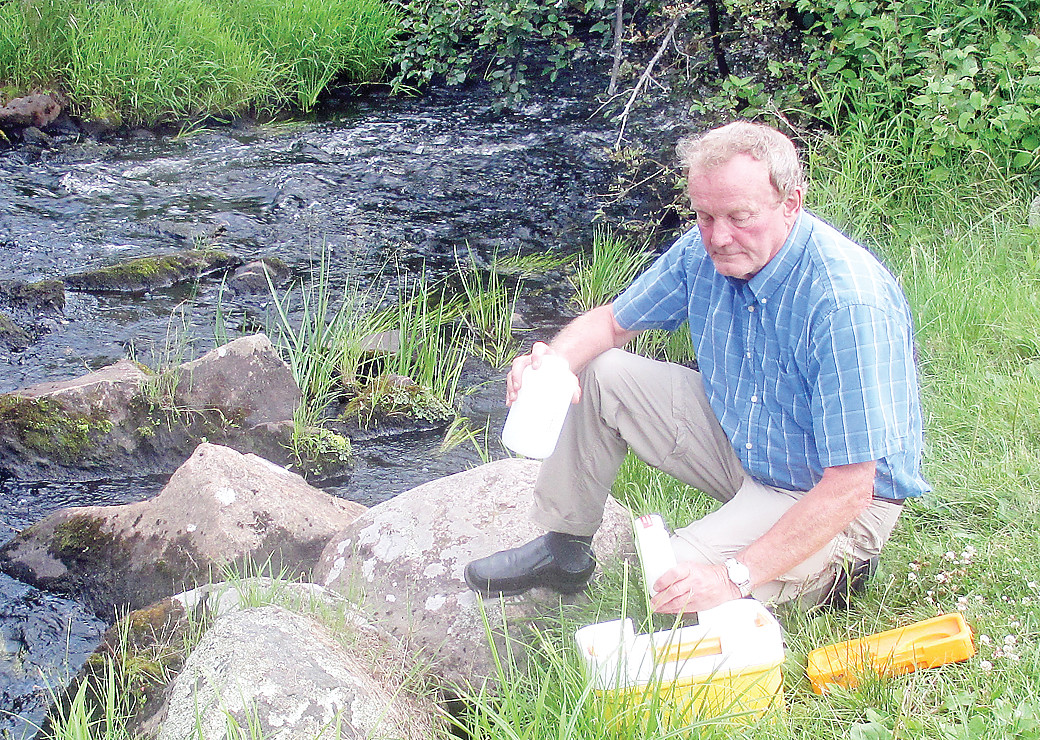Support the Timberjay by making a donation.
Testing raises zebra mussel concern
EAST TWO RIVER— Recent water test results from the East Two River, near Tower, have raised concerns about the potential spread of invasive zebra mussels to Lake Vermilion.
While the tests found …
This item is available in full to subscribers.
Attention subscribers
To continue reading, you will need to either log in to your subscriber account, or purchase a new subscription.
If you are a current print subscriber, you can set up a free website account and connect your subscription to it by clicking here.
If you are a digital subscriber with an active, online-only subscription then you already have an account here. Just reset your password if you've not yet logged in to your account on this new site.
Otherwise, click here to view your options for subscribing.
Please log in to continue |
Testing raises zebra mussel concern
EAST TWO RIVER— Recent water test results from the East Two River, near Tower, have raised concerns about the potential spread of invasive zebra mussels to Lake Vermilion.
While the tests found no evidence of zebra mussels, they did reveal higher-than-expected levels of calcium, which could help sustain a zebra mussel population in the river. With the increased number of boats now coming into Tower’s harbor, located on the East Two River, officials with the Lake Vermilion Sportsmen’s Club are concerned the river and harbor could provide a possible refuge for zebra mussels, if they are eventually introduced into the harbor or a point nearby.
While zebra mussels represent a growing scourge around Minnesota, biologists believe that the geological conditions along the Canadian Shield have generally protected lakes in the far northeastern part of the state from the invasive pest. Like most shellfish, zebra mussels require sufficient calcium in order to grow their protective shells. In most Minnesota lakes, natural calcium comes from limestone deposits formed in ancient seabeds. But the last glaciers scraped the Canadian Shield nearly bare of limestone, leaving little calcium behind. That’s good news when it comes to zebra mussels, but it also leaves shield lakes particularly vulnerable to other threats, such as acidic runoff and heavy metals.
Regular water quality monitoring on Lake Vermilion has found calcium levels average about 13 mg/liter in the eastern basin, with a gradual decline to the west. That’s lower than the 15 mg/liter threshold for zebra mussel larvae to survive and it’s much below the 20-25 mg/liter necessary for those larvae to develop into adults and reproduce.
But water sampling from the East Two River has confirmed calcium levels of 25-30 mg/l, more than high enough to sustain a zebra mussel population. Those results caught the attention of Sportsmen’s Club members, who recently conducted follow-up testing. “Subsequent samples in the same area and further downstream confirmed those levels,” said Wayne Souja, who heads up the water quality monitoring effort for the club.
What’s unclear is whether the calcium levels are naturally high in the river, or if there’s a human-introduced point source for the chemical— and that’s now the focus of additional inquiry by the club as well its partners, including the Lake County and North St. Louis County Soil and Water Conservation Districts.
Working with interns from Vermilion Community College, the team is taking samples from various points along the river, from the headwaters in the Eagles Nest chain of lakes to the harbor, in hopes of locating a possible source of the calcium. “I’m pretty optimistic that we’ll be able to determine if it’s a point source or a background level,” said Derrick Passe, the Rainy River watershed coordinator for the Lake County SWCD. “If it’s a point source, it should be fairly easy to locate,” he said.
While calcium levels are typically low on the Canadian Shield, Passe said isolated geological formations occasionally provide point sources that can raise levels in certain lakes or streams. On the other hand, the introduction of large amounts of limestone into the watershed, or stockpiling of calcium chloride for winter road use, could be possible manmade sources of calcium.
Calcium not the only factor
While calcium levels in the East Two River are higher than is typical in the region, that’s not the only determining factor in zebra mussel survival. According to Passe, the mussels also require a higher pH level, 7.8 or higher, than is found in many shield lakes. Water testing from the East Two River found pH levels ranging from 6.7 to 7.1 so far this year, which would presumably be low enough to limit zebra mussel survival.
But the Sportsmen’s Club isn’t taking any chances. In addition to their follow-up testing, which should be completed this fall, the group is installing “substrate samplers” near the harbor in hopes of detecting any early emergence of the mussels. The samplers are made from short sections of PVC pipe, which provide the hard attachment surface preferred by adult zebra mussels.






